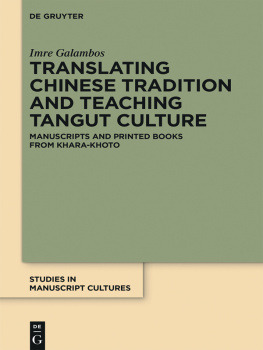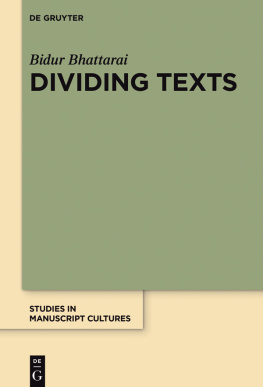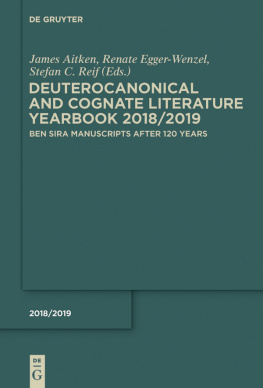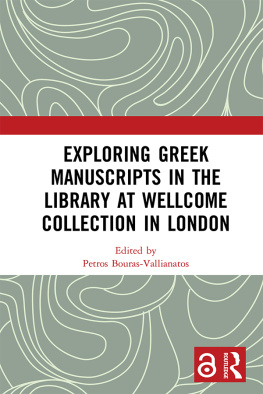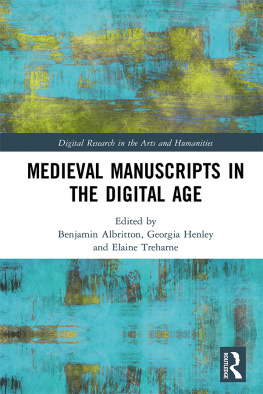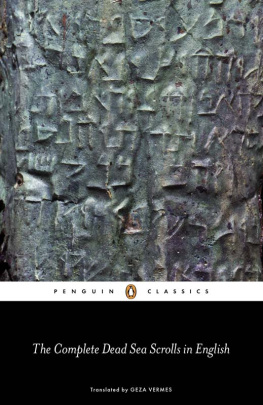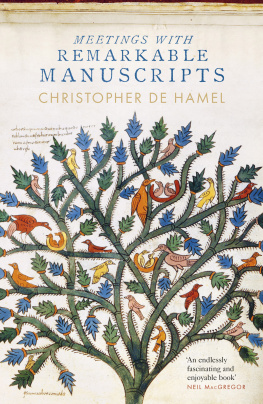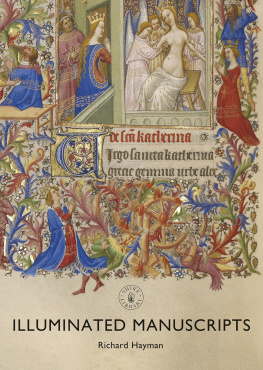THE RIDDLE OF THE SCROLLS
HENRI E. DEL MEDICO
TRANSLATED FROM THE FRENCH BY
H. GARNER
THE KEGAN PAUL LIBRARY ARCANA
AN ETHIOPIAN BOOK OF THE DEAD E. A. Watts Budge
THE BOOK OF MEDICINES E. A. Watts Budge
AMULETS AND MAGIC E. A. Watts Budge
THE QUEEN OF SHEBA AND HER SON MENYELEK E. A. Watts Budge
THE DIVINE ORIGIN OF THE CRAFT OF THE HERBALIST E. A. Watts Budge
THE ROMANCE OF SORCERY Sax Rohmer
POSSESSION T. K. Oesterreich
THE LADY OF THE HARE John Layard
POISON DAMSELS N. M Penzer
ELIXIRS OF LIFE Mrs. C. F. Leyel
ETRUSCAN ROMAN REMAINS Charles Godfrey Leland
EGYPTIAN MAGIC E. A. Watts Budge
A GUIDE TO MAGIC, SORCERY, AND THE PARANORMAL Sax Rohmer
HERMETIC PHILOSOPHY AND ALCHEMY MA. Atwood
THE DRUIDS T. D. Kendrick
THE HISTORY OF TORTURE THROUGHOUT THE AGES George Ryley Scc
THE RIDDLES OF THE SCROLLS H. E Del Medico
THE VAMPIRE IN EUROPE Montague Summers
ANCIENT PAGAN AND MODERN CHRISTIAN SYMBOLISM Thomas Inmat
BARALAM AND YEWASEF E. A. Watts Budge
CHALDEAN MAGIC Francois Lenormant
COUNT CAGLIOSTRO Constantine Photiades
EGYPTIAN MAGIC E. A. Watts Budge
THE BOOK OF CEREMONIAL MAGIC Arthur Edward Waite
MALAY POISONS AND CHARM CURES John D. Gimlette
ADVENTURES OF THE MIND Arturo Castiglioni
THE RIDDLE OF THE SCROLLS H. E Del Medico, translated by H. Garne
THE RIDDLE OF THE SCROLLS
Reading like a detective thriller involving the highest of stakes, this story of a discovery that is still to be fully revealed, one that has sp scholarly community worldwide, and which may yet transfom understanding of two of the worlds religious faiths. The manuscripts collectively as the Dead Sea Scrolls have been the subject of controvers since the discovery of the first texts in a cave in the Judean Desert at K Qumran in 1947. The precise details of this find, and the story of happened to these manuscripts and the many others found subsequen other sites are shrouded in mystery, partly because some were uncc during illegal explorations which destroyed important eviden provenance, and partly because it soon became apparent that the conte the scrolls themselves were highly sensitive, consisting of religious many previously unknown. The first Qumran finds took place during pivotal period when the new Zionist nation of Israel was in its infanc; any discoveries bearing on the early history and identity of the Jews region took on added significance. Even more important, the new tex and still have the potential to radically change our perception of Judaism, the birth of Christianity and the nature of Judaeo-Christian rel belief itself. Beginning with an account of the discovery of the first s Del Medico deals with possible authorship and translation before pres translations of the seven non-Biblical texts from Cave 1 including the i debated Book of the War of the Sons of Light against the Sons of Dar Who wrote these manuscripts; when, where and why were they written they really sacred writings; who was the mysterious Teach Righteousness; what do the scrolls tell us about the past and the pr Today, there are several hundred documents and fragments th considered Dead Sea Scrolls, but these fundamental questions are noi resolved, and Del Medicos classic work provides the best and cl background to the continuing riddle of the scrolls.
www.keganpaul.
First published in 2005 by
Kegan Paul Limited
This edition published 2012 by Routledge
2 Park Square, Milton Park, Abingdon, Oxfordshire OX14 4RN
711 Third Avenue, New York, NY 10017
Routledge is an imprint of the Taylor & Francis Group, an informa business
First issued in paperback 2012
Kegan Paul, 2005
All Rights reserved. No part of this book may be reprinted or reproduced or utilised in any form or by any electric, mechanical or other means, now known or hereafter invented, including photocopying or recording, or in any information storage or retrieval system, without permission in writing from the publishers.
British Library Cataloguing in Publication Data
Applied for.
ISBN 978-0-7103-1050-7 (hbk)
ISBN 978-0-415-54312-5 (pbk)
CONTENTS
ACKNOWLEDGEMENTS
The Author and the Publishers wish to thank Professor H. H. Rowley for reading the proofs of this work and for his help in an advisory capacity during the production of the book.
They also wish to thank Helene Bieberkraut for permission to reproduce the photographs which appear facing .
ILLUSTRATIONS
Since the discovery of Hebrew manuscripts in a cave in the Judean Desert close to the Dead Sea, more than a thousand studies have been published on them, and fresh studies continue to appear almost every day. In some works attempts have been made to present general conclusions, but they have immediately been outdated by fresh facts, new theories, or the results of research, often on some point of detail. Works of a general nature aim at putting the manuscripts in their setting; and what is read in the texts is interpreted in accordance with the date assigned to them, and the environment in which their authors are placed. One has to start with assumptions based on what are considered assured facts, but since the discovery of the first manuscripts, many published items of information have been found to be incorrect. Some have since been corrected, but such corrections, being published in specialist reviews, are often not noticed or are passed over in silence. In considering these Dead Sea Scrolls, theories are sometimes based on fresh data which are open to question. In a word, it is the texts, and the texts alone, which can tell us their history.
At the time when I wrote my first article on the manuscripts from the Judean Desert1 I had recognised that the writings, a few samples of which had just been published, could not be earlier than the first century A.D. I said that these writings could only have come from a geniza (depository for unusable sacred books, etc.), a cemetery for books, not from a hidden library as has been claimed for them since then. For a long time it was insisted that these manuscripts dated from the second century B.C., but in the end the first conclusion to which I had come was admitted to be correct. As regards the non-Biblical writings, a number of scholars still talk about ancient texts having been recopied, and want to date the composition of them in the Maccabean period. The majority of scholars, however, agree in assigning them to a later date. My second conclusion is still rejected. These Dead Sea manuscripts are often attributed to the Essenes: there is always the desire to see in these rolls and fragments the remains of a precious library buried, at a time when war was raging, by Jewish monks, who hoped one day to recover them intact.
It is with this assumption as a starting-point that all these texts are read and interpreted. It is in this hypothetic monastic environment that is placed the drawing up of all the manuscripts found in the caves of Qumrn, and everything that is read in them is considered to be part of the customs, beliefs and manners of the Essenes.1
Nothing that has been published up to the present has allowed me to modify my first impression. On the contrary, many new details have confirmed my opinion that the Dead Sea Scrolls do not form a homogeneous whole, a library, but a heap of various writings and fragments which rabbinic authority consigned to


